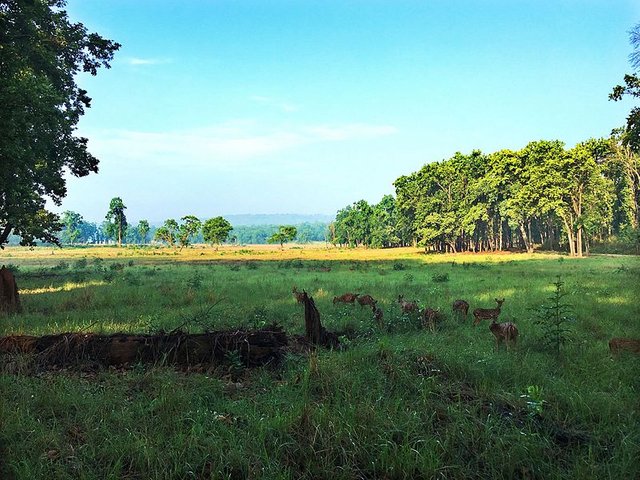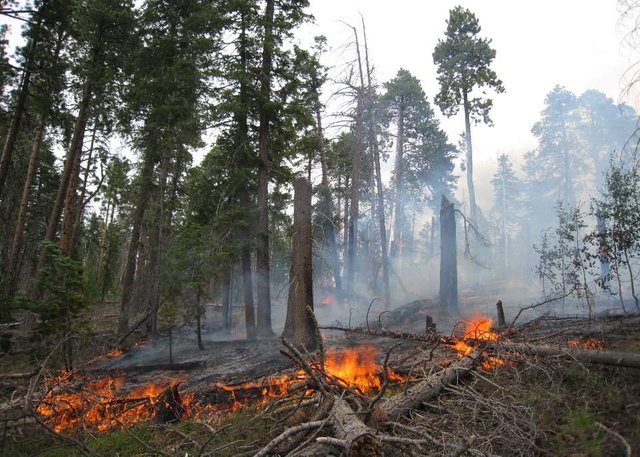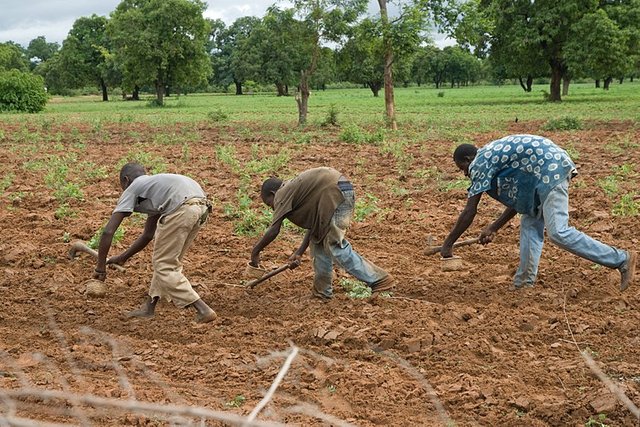GRAZING RESERVE: A NATION'S BACKBONE
Back to our discussion about grasses, well we would be diving into a much deeper context today, do check out my post on “grasses and preservation methods – silage and hay making”
you might find it interesting and beneficial enough.
Management is a day to day word; we might have come across or put into action different management activities while growing, so this shouldn’t sound strange. Just like we set action or course or task to fulfil goals, grassland has targets to be met at the end of the day, to avoid loss of time and resources. So, let’s define management in the shadow of pasture in which we are dealing with.

Management of Pasture
“This is referred to as the various processes carried out to maintain a pasture for increase in productivity and output by an animal”
What is a pasture?
This is a unit area of land covered with grasses. They can be classified into two (2) namely: Natural pasture which consists of legumes, grasses and browse plants and has never being interfered with by human; whilst a Cultivated pasture which can be sub divided into temporary or permanent, but the baseline is; they are grown to suit the needs of the farmer. That is, they are deliberately sown.
The above is a just a basic knowledge we need in pasture management, to know what we are dealing with and how to.
Are we together?

Different management techniques are available to successfully manage a pasture. They include:
Methods of Bush Control
Bush control method depends on the pasture type, species available, topography, plant species and herbicide availability. It includes the Use of Animal (Biological enemies) to eliminate the threat; Use of Mechanized implements e.g. Tractor/Bulldozer , Use of Herbicide or burning; which is the most common of all factors especially in the Tropics. It involves the use of fire to burn off unpalatable plant species, pest larvae, helps in soil improvement and growth of natural legumes.
Did you know? There’s a plant which comes out greener and faster after being burnt? It’s called GRASSES.
But the side effect of too much burning includes manifestation of new undesirable plant and parasite, root depletion (reduces faster growth) and risk of erosion.
- Reseeding simply means Sowing and can be referred to as deliberate introduction of more desirable herbage species. Intentional selection of plants to compete or feature in a pasture land or based on the need of the animal or the farmers.
- Provision of water/Irrigation is the artificial application or supply of water. In the rainy season where there is rainfall, little or no irrigation is required, but during the dry season the plants require additional water source so as not to reduce their leaf area. Irrigation can prevent or reduce conservation due to the fact that it enhances continuous production.
Sources of water
Basic information if you’d agree. They include Streams, Ponds, Dam, Well and Borehole. All surface waters (stream, pond, rivers) are prone to parasite infestations e.g. Tsetse fly and liver fluke. They also are seasonal as they tend to dry up in the dry season. Unlike the Borehole which assists irrigation processes, allows more uniform distribution, reduces wastage, reduces rate of disease transmission but has a high cost of installation and maintenance.
The longer the distance of water from the pasture, the lower the animal’s productivity
Creation of Fences : as highlighted in my previous post – “it is used to protect or confine livestock in a particular area. Of course, we would love to control our stocks or crops against evil eye. So, fencing is as much as important as sowing a seed itself while Paddock is defined as an intensive feeding system in a confined area where all or the majority of feed, water and other materials are kept. So the difference between a fence and a paddock is that a fence is external (built to surround a farm) but a paddock is used to partition a farmland into various sections or into several grazing area.”
Read more about fences and other bio-security measures hereForage conservation : this is also very essential to ensure quality production all year round; they include Silage, hay making, crop residues, standing hay, legume hay etc. Read full article on different outlines and how to produce them here.
Grazing Management is the process of organising livestock, regulating the frequency and intensity at which livestock graze a pasture land. Just like establishing a pasture land, you’d agree with me that managing is quite the most important factor, else might lead to deterioration and thus a great loss.
Methods of grazing management
Continuous grazing is a situation where the animals are not restricted to the pasture land. They have full control to move about and consume every plants that comes their way while Rotational grazing deals with sectioning. The pasture land has to be divided or partitioned into several options to allow the animals fully graze one part before moving on and it allows a grazed section to fully recover.
In grazing management, certain things has to be considered which includes Stocking rate which means the amount of animal kept on a unit area of land for a certain period of time. Carrying capacity is the area of land that can carry one mature animal throughout a year without deteriorating while Grazing pressure is the relationship between the animals and forage in an area of land. These three terms greatly affect the continuity and survival of a pasture land. Hence, if one is lacking the others might not be in good shape which in turns affect the pasture and the animal eventually.


The Chital Grazing the Grasslands of Kanha National Park by Pratyaksha5985 licensed under Creative Commons Attribution-Share Alike 4.0 International
HOW DO THEY TEAM UP TO GRAZING RESERVE?
Good question if you ask me, “A Grazing Reserve can be defined as a unit area of land established for the sole purpose of feeding animals or for adequate conservation and preservation of forage.” Yes, a grazing reserve can either be natural or cultivated, based on the biological value in that area. With all the management technique listed above, I think establishing a grazing reserve becomes easy. Do you agree?
In a country such as Nigeria, blessed with vast amount of land, good weather and Good labour/Mechanization, establishing a grazing reserve isn’t too much to ask considering how Agriculture can contribute to the nations GDP, employment status, degree of mechanization, herdsmen-farmer clash and so on.
It’s that simple, isn’t it? You might wanna read this
Each state or geopolitical zone can create one or two grazing reserves to support the farmers or herdsmen in ensuring growth and improve productivity for their livestock. Corporate bodies or individuals can also take on this business idea and capitalize on this national problem.
HOW GRAZING RESERVE CAN UPLIFT THE COUNTRY
Judging by the alarming rate of unemployment, it serves as an employment opportunity for country men and an income source for individual, country and corporate bodies with less beggars and reduction in poverty level. It can also assist in raising the standard of living . Establishment of cut and carry system where herdsmen can fetch suitable grass species for their animals without having to travel over long distance and it also helps reverting extinction of certain plant species especially those that animals graze more often. Helps in building the ecosystem . Allows for growth of more trees which helps in fixing the atmospheric nitrogen and many more. A source of Foreign exchange for the country and can help in preventing conflicts between farmers and herdsmen – allows more peaceful coexistence. Lastly, as an encouragement for research activities in pasture and range management as well as related fields.
I hope you can see... it is totally inevitable for a country such as Nigeria or African nations in general.
CONCLUSION
The alarm of establishing a grazing reserve has been blaring for ages in Nigeria with bills of several millions passed and thousands of hectares reserved. You might as well save a plot of land to establish a grazing reserve for your animals for enhanced productivity, you should not pay a dime for this natural gift as long as you heed to the steps listed above. Grasses are free and they serve as the bridge between man and his livestock.
Yes, it is essential to see progress and I hope I have impacted more knowledge about grazing reserve and its management? If yes, feel free to drop a comment, but if I did lack in some aspects… I’d appreciate scolding so I can work on them better. Thank you for your patience.
REFERENCES
MANAGEMENT OF GRASSLAND by Prof. O. S. Onifade (Federal University of Agriculture, Abeokuta)
Grazing reserve
Grazing management
If you write STEM (Science, Technology, Engineering, and Mathematics) related posts, consider joining #steemSTEM on steemit chat or discord . If you are from Nigeria, you may want to include the #stemng tag in your post. You can visit this blog by @stemng for more details.



Agriculture is sure the way to economy stability.
Definitely....
Noted... Will adjust
It reminds me so much of my dad and how he talked about his work and projects.
Hmmm, I really wish I could meet such a great man.
I love the write up man!, you thought me somethings about agricultural, I will look forward for your subsequent posts
I'm glad I could impact... Thanks for the love though, will be looking forward to future interactions.
Every venture has a set goal which they want to achieve and therefore there must be some means of control and monitoring to ensure these goals are met. The key to achieving this is through a good Management, which is the live wire of any venture to ensure its continuity.
Well done man!
Smiles thanks for the addition. But of course, life itself is about successful management.
I hope to see you again soon
You sure can count on me.
You are welcome by the way.
Smiles
Interesting read.
But looking at the future, we may be left with just a handful of lands due to our population in Nigeria. All jokes tho.
Maybe, maybe not. I hope land encroachment doesn't set in due to high and rapid deforestation.
I hope you're working on saving the situation by establishing a reserve. Good to have you here...